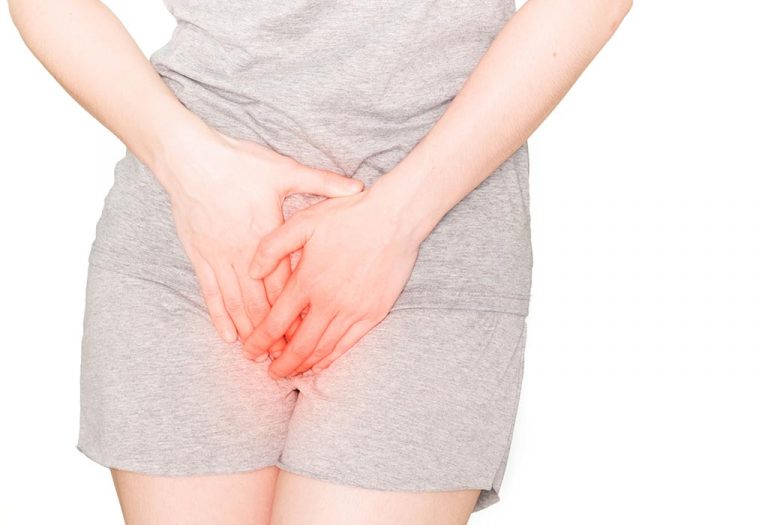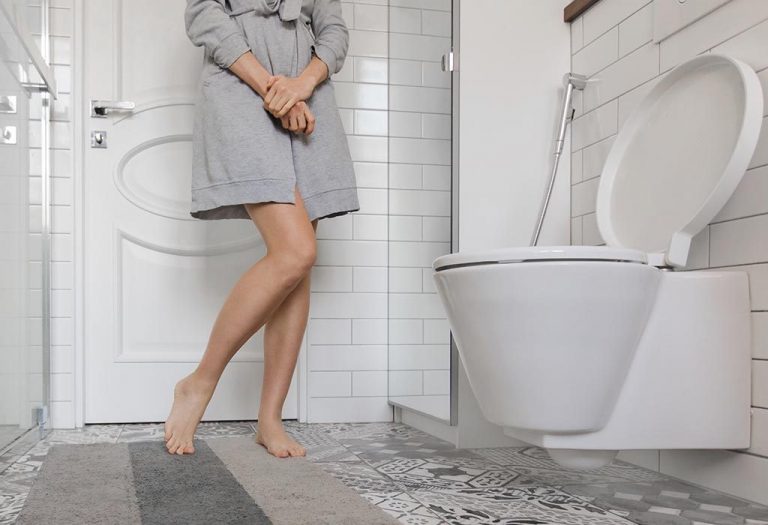Gas After C-Section – Causes and Remedies
- Is Having Gastric Problems After C-Section Normal?
- Possible Causes of Getting Gas After C-Section Delivery
- Home Remedies to Get Relief From Gas Pain After C-Section
- Exercises to Help You Get Rid of Gas After C-Section
- FAQs
Pregnancy is a tough time for moms because it’s challenging physically and emotionally and takes a lot out of them when delivering a baby. Be it through vaginal birth or C-section, gastric pain is something many mothers worldwide can relate to. In the following article, we will dive deep into the gas problem after a C-section, whether it is normal, its causes, and what could be done to relieve such an issue. If you have planned a C-section with your doctor ahead of time or are just curious about it, learning in advance about gas trouble after a C-section will help you mitigate the problem if, in any case, it arrives.
Is Having Gastric Problems After C-Section Normal?
Yes, gastrointestinal or gastric problems are general postoperative complications after a C-section and are normal. This is because when your abdominal region gets surgically cut up under general anaesthesia and stitched back, it causes pain and swelling. Your bowel movements cease to function temporarily like before for some time which leads to bloating and distension, and difficulty in passing gas (1).
Possible Causes of Getting Gas After C-Section Delivery
Are you very gassy after a C-section? We’ve listed the most common ones that cause gas pain after a C-section below:
1. Diet

The food you eat and the choices in your diet will either improve or worsen your gastric pain. Foods that worsen gastric problems include dairy products, whole grains, prunes, Brussels sprouts, and carbonated beverages. Not eating high-fat items and foods with high amounts of fibre is a good idea.
2. Crohn’s Disease
Women with Crohn’s disease or any similar digestive medical conditions like Irritable Bowel Syndrome (IBS) will be more prone to cases of gastric pain. These conditions may heighten the sensations of pain and cause their gastric issues to worsen (2).
3. Infections
Infections of various sorts are also known to contribute to gastric pain. It is best to have a thorough medical evaluation to determine the underlying causes of gastric pain if they are tied to these. Infections may occur from vaginal discharge, nausea, and vomiting as well (3).
4. Episiotomy
Episiotomy is a special surgical procedure where a surgical incision is made between the vagina and anal opening to prevent cases of tearing (4). Sometimes this leads to gastric pain because the pelvic floor muscles get weakened due to this procedure.
5. Constipation
Constipation is a common cause of gastric pain after a C-section delivery. Usually, this leads to hard and lumpy stools followed by irregular bowel movements. The bloating and pain in the abdomen seem to contribute to the gastric pain. In addition, some medications make patients feel constipation, while other cases of constipation stem from diet and lifestyle choices (5).
6. Pelvic Floor Injuries
If you’ve had trauma to the pelvic floor muscles or any injuries there, it leads to the weakening and losing control over your gas. That causes gastric issues since you also lose control of your bowel movements in the process (6).
Home Remedies to Get Relief From Gas Pain After C-Section
Looking for home remedies on how to relieve gas after a C-section? Try these out (5) (7) (8)!
1. Drink More Water
Staying hydrated will help your bowels move regularly, prevent constipation, and clear up the gas.

2. Don’t Smoke or Drink
Smoking and drinking alcohol make gastric pain worsen. Refrain from such activities.
3. Change Your Diet
Add green veggies and fruits to your diet and reduce the fat intake. If your stools are too hard, you may ask your doctor to prescribe a stool softener.
4. Don’t Use a Straw
Drinking from a straw can cause more air bubbles in your stomach and worsen your gastric woes. So, refrain from drinking from one. Also, avoid carbonated beverages and chew your food thoroughly so it gets digested well.
5. Rocking in a Chair
No, we’re not kidding. Rocking in a chair will help stimulate your bowels or at least help them eliminate the gas. Rocking in a reclined chair will help immensely.
6. Move Often

Walking is one of the best ways to eliminate gas problems after a C-section. If you’re feeling lethargic or don’t feel like going for frequent walks, at least move often within your room. This could be as simple as changing your position throughout the day and not lying on the floor or bed too often. Consult your doctor about the best and safest time to start moving often and for what duration to ensure the stitches are not harmed.
Exercises to Help You Get Rid of Gas After C-Section
Many new moms wonder how to pass gas after a C-section safely and comfortably without straining their incision area. Here are a few exercises you can do to relieve or even eliminate gas pains three weeks after a C-section:
1. Pelvic Floor Exercises
Any range of exercises which strengthen and target your pelvic floor muscles will work towards reducing your gastric problems (9).
2. Abdominal Exercises
Abdominal exercises are also known to lessen gastric problems after a C-section. A good exercise is to lie down on your side and bend your knees a little. Breathe in slowly using your abdomen and hold your abdominal and pelvic floor muscles both for 10 seconds. Release, breathe out, and repeat this technique up to 10 times every day.
3. Knee-Lifts
Knee lifts is a good exercise for relieving or eliminating gastric pain. Start off by lifting your knee up a little and working your way up to your chest level. This will help break down the case. You can do knee lifts while lying down on the floor too.

4. Cat Pose
Yoga poses are fantastic for eliminating constipation, bloating, and gastric problems in pregnant women. The cat pose is one of our favourite poses that works and gives results. It doesn’t hurt your wound and gently lifts your stomach, helping you release gas and giving you adequate relief. It’s perfect for fixing your gas problem after cesarean delivery.
5. Shoulder Rolls
If the gas affects your shoulders and travels all the way up, try a couple of shoulder rolls. Back and forth. Take your time with this, and be gentle. It helps.
Before performing any exercise after delivery, it is important to consult your doctor and take their advice, as they will be able to guide you better based on your recovery.
FAQs
1. What are some positions to help pass gas after a C-section?
Lying on your left side, sitting upright with knees bent, or gently rocking back and forth while seated can help relieve gas after cesarean. You can also try the “knee-to-chest” position while lying on your back, but only if it’s comfortable. Walking frequently and practising deep breathing can further aid digestion.
2. When should I see a doctor for gas problems after a C-section?
If gas pain is severe, persists beyond a week, or is accompanied by fever, vomiting, or constipation, seek medical advice. It could indicate an underlying issue like an intestinal blockage.
Gastric problems after a C-section are common in women, but the good news is that they are temporary and completely treatable. Do these exercises, try out the home remedies, and lead a healthier lifestyle. That way, you’ll get the relief you want, and the pain will also go away eventually. However, if the gas issue or constipation persists for longer or is recurring after every few weeks of your C-section delivery, consult your doctor without any delay.
References/Resources:
1. PubMed Central – Effect of Early Post Cesarean Feeding on Gastrointestinal Complications
2. Cleveland Clinic – Crohn’s Disease
3. Cleveland Clinic – Gas and Gas Pain
4. The Johns Hopkins Medicine – Episiotomy
5. Tommy’s – What happens after a c-section (caesarean)?
6. Cleveland Clinic – Pelvic Floor Dysfunction
7. BRIGHAM AND WOMEN’S HOSPITAL – Gas: Beat The Bloat
8. Cleveland Clinic – Bloated Stomach
9. Cleveland Clinic – Kegel Exercises
Also Read:
Climbing Stairs after Caesarean Delivery
Causes of Leg Pain After C-section Delivery
Ways to Reduce Weight After Caesarean Delivery
Precautions to be Taken While Bathing After C-section Delivery
Was This Article Helpful?
Parenting is a huge responsibility, for you as a caregiver, but also for us as a parenting content platform. We understand that and take our responsibility of creating credible content seriously. FirstCry Parenting articles are written and published only after extensive research using factually sound references to deliver quality content that is accurate, validated by experts, and completely reliable. To understand how we go about creating content that is credible, read our editorial policy here.























